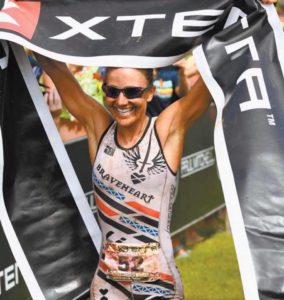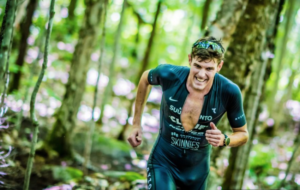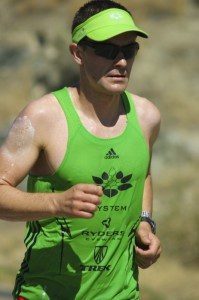7 Tips to go faster that you can do right now
Swim, bike and run tips that will make you faster once we're able to get back to racing.

Even during the disruption of your regular training routine you can set yourself up for success once we’re able to race again.
by Kerry Hale
Swim:
Lesley Patterson won the Xterra World Championships in 2018 and is a five-time off-road world champion. Known as a tenacious competitor, she offers some out-of-water swim tips:
“Swimming is so much about your proprioceptive awareness in order to nail your technique,” she explains. “Slight movements of your wrists, hands, hips, can have massive changes on your stroke. In the off season, I will often do dance classes or martial arts classes to get fluidity of movement and a sense of my body in lots of planes of motion. As triathletes we pretty much move in the forward planes, so we often become uncoordinated doing anything else.”

In terms of equipment, Patterson uses various tools to help her form and endurance.
The VASA ergometer: “I simply cannot say enough good things about it. It’s strength oriented, you can put mirrors all around you so you can address issues of stroke technique. You can do full-on swim sets at different resistances.” It is an expensive piece of equipment, however. Some clubs have invested in them. If not, suggests Patterson, “Try getting three or four of your friends to all chip in a few hundred bucks and just share it around.”
Swim cords: Smith is a proponent of using swim cords all season long to help work on your form.
Indoor rowing machine. “You can focus on major strength and aerobic training here that actually transfers quite well to swimming. Although its slightly different muscle groups, there is a lot of crossover. You can set sessions and have competitions with friends.”

Bike:
Karsten Madsen improved his biking substantially a few years ago, leading to a top-10 finish at the Xterra World Championships. Here’s his biking advice:
Power meter. “This is a great tool to track and quantify what you have done or are doing. The prices keep dropping, too, with many good options for hub, crank, crank arm and pedals. It really is a no brainer to invest in one. I have a power meter on every bike I ride.”
Hill repeats. Climbing used to be a weakness for Madsen. “As courses got really steep and my RPMs dropped, my power would drop off so I wanted to become better at delivering functional power.” Enter hill repeats. Choose a short and relatively steep section of road.
“It can get tedious spending 45 to 90 minutes going up and down the same section of road, but you can use markers to gauge every rep in every session. It will greatly improve your functional power and make you enjoy the days you can just explore more scenic routes on your bike.”

RUN:
Jasper Blake is a former Ironman Canada Champion and recognized as a superb runner. Here are his run tips:
Plyometrics: Plyometrics are exercises that involve repeated rapid stretching and contracting of the muscles (jumping/explosive movements). “Plyometrics can be included in gym/weight room sessions that you might already include in your program as well as during your regular running sessions after a suitable warm up,” says Blake. “It’s important to exercise caution when performing explosive movements though. Your warm up needs to be robust and you need to be technically proficient.”
Manage peripheral fatigue: Peripheral fatigue is the inability to maintain a desired pace over long distances. “Long distance running, especially during a triathlon, is less about speed and more about your ability to maintain form and rhythm under increasing peripheral fatigue. It’s not uncommon to see pace times drop dramatically in the latter stages of the marathon in an Ironman. Your heart and lungs are usually fine; it’s your ability to handle the ongoing impact load on increasingly tired muscles that will hold you back.” The answer? “Hills are a great way to work on your peripheral fitness. And that includes the downhill portion of the hill.”
A version of this story appeared in the January, 2019 issue of Triathlon Magazine Canada.
